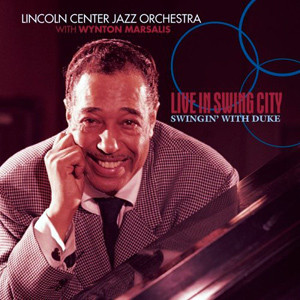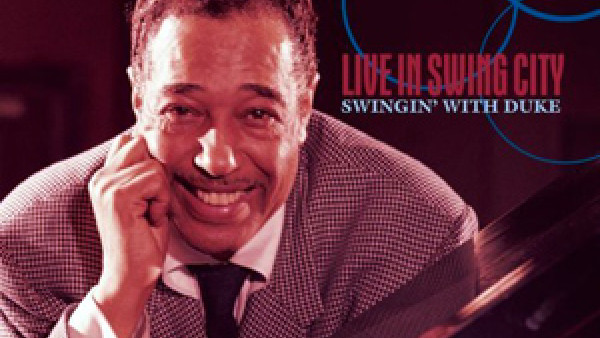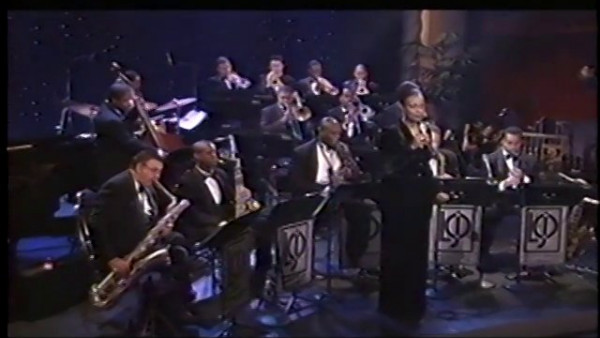Ellington: The Keys To a Life
Toward the beginning of “Swingin’ With Duke,” Wynton Marsalis suggests that “when you start to play Duke Ellington’s music, you start to feel how he lived in the world.”
Hearing Ellington’s music beautifully played by the Lincoln Center Jazz Orchestra, and having it smartly placed in context by Marsalis, artistic director of Jazz at Lincoln Center, provides additional windows into Ellington’s world. That world is the subject of “Swingin’ With Duke,” a 90-minute special airing tonight at 9 on Channels 22 and 26 as part of PBS’s ongoing “Great Performances” series. (Recorded August 25-27 of 1998 at The Supper Club in New York City)
Call it a belated birthday present to ourselves, as well as to Ellington, the Washington-born composer, pianist and band leader whose centennial was celebrated April 29. The special deftly blends performances by both the Lincoln Center Jazz Orchestra and, via historical clips, Ellington and his legendary orchestra, with illuminating commentary by Marsalis, who has devoted himself and LCJO to a year-long exploration of the Ellington legacy.
Marsalis addresses Ellington’s astonishing musicality and historic achievements, as well as his personal dignity and humanity, particularly in dealing with racism (“he represents affirmation in the face of adversity”).
Marsalis calls Ellington one of the two towering figures in American music, along with the great improviser Louis Armstrong. Ellington, he says, codified the jazz tradition by writing it down. He was “our Homer, who takes our mythology and puts it in a context so it can be re-created generation after generation.”
That Ellington was both a great innovator and a conservator of tradition is brought home by the exotic “jungle music” of such classic early works as “Black and Tan Fantasy,” the New Orleans-informed tributes “Second Line” and “Portrait of Louis Armstrong” and the rhythmically riveting aural snapshots of Ellington’s favorite community in “Harlem Air Shaft.”
In addition, there are three motion masterpieces—“Happy-Go-Lucky Local,” “Daybreak Express” and “Take the ‘A’ Train”—that underscore the classic Ellington Orchestra’s perpetual travels.
There are also the varied blues so crucial to Ellington’s palette, from the disciplined “C-Jam Blues” and the elegantly morose “In a Sentimental Mood” to the gutbucket plaint of “Rocks in My Bed,” featuring vocalist Dianne Reeves (who is less impressive in the vocalise “Bli-Blip”). Illinois Jacquet guests on a luminous “Sophisticated Lady,” and old clips conjure the greatness of Ella Fitzgerald, Johnny Hodges, Paul Gonsalves and Ellington himself at the piano (though the orchestra was really his instrument).
The only major drawback to “Swingin’ With Duke” is the inclusion of Lindy hop dancers on a half-dozen selections. While historically appropriate to swing standards like “Main Stem,” they come across as loose-limbed production fluff.
In addition, too many of the performances are interrupted or shortened for commentary. Which makes it somewhat ironic when Marsalis insists that, as with the music of Bach and Beethoven, you don’t have to talk about Ellington’s music; you just have to check it out.
by Richard Harrington
Source: The Washington Post



